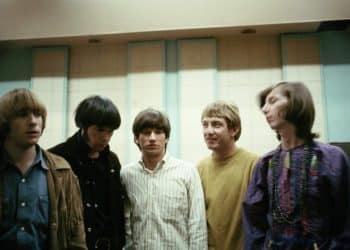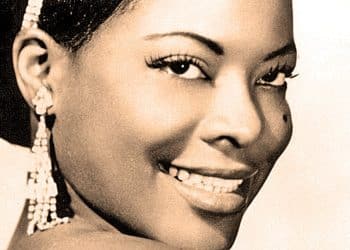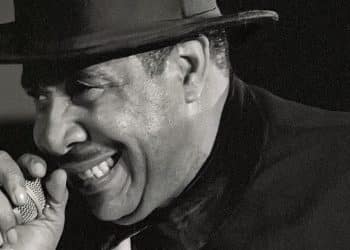Deep Purple is a band that has forever etched its name into the annals of rock history. Known as one of the pioneers of heavy metal and hard rock, their electrifying sound, virtuosic musicianship, and unforgettable riffs have made them legends in the music world. With a career spanning more than five decades, Deep Purple has given fans some of the most iconic rock anthems of all time. From blistering guitar solos and thunderous drumbeats to soaring vocals and Hammond organ wizardry, their music has inspired generations of rock enthusiasts and musicians alike.
In this article, we dive into the top 10 most popular Deep Purple songs of all time—a collection of tracks that have defined their legacy and continue to ignite the passion of fans across the globe. Whether you’re a lifelong devotee or a newcomer eager to explore their timeless catalog, this list will take you on a thrilling journey through the band’s greatest hits. From the raw energy of their early days to their more experimental later works, these songs showcase the brilliance and power that make Deep Purple truly unforgettable. So, crank up the volume, and let’s celebrate the masterpieces that solidified their reign as rock royalty!
1. Smoke on the Water (1972)
“Smoke on the Water,” released in 1972 as part of Machine Head, is undoubtedly Deep Purple’s most iconic song. With its instantly recognizable guitar riff, it’s one of the most famous and enduring rock anthems of all time. The song was inspired by a fire that broke out during a Frank Zappa concert at the Montreux Casino in Switzerland. The band was there to record, and the fire destroyed the venue, leaving a trail of chaos in its wake. The song’s lyrics vividly capture this dramatic event, with references to the smoke rising over Lake Geneva as the casino burned. The raw energy of the track, especially the relentless guitar riff by Ritchie Blackmore, has made it a fixture in rock culture.
Ian Gillan’s powerful vocals bring a sense of urgency to the track, further elevating its intensity. The combination of a great story, a memorable riff, and high-energy performances made “Smoke on the Water” a classic. The track’s influence on rock music cannot be overstated, and its place in history is solidified as it remains a favorite at concerts and on classic rock playlists worldwide. It’s a song that’s not just heard but felt in the very soul of rock ‘n’ roll.
2. Highway Star (1972)
“Highway Star,” which opens Machine Head, is the ultimate adrenaline-pumping rock anthem. Released in 1972, the track is about speed, freedom, and the thrill of the open road. But beyond the raw energy, the song also captures the relationship between a car and its driver, drawing a comparison between the machine and a lover. The high-octane lyrics, paired with one of the most dynamic guitar solos in rock history, make “Highway Star” a celebration of both freedom and technical brilliance.
The song’s powerful rhythm is driven by Ian Paice’s precise drumming and Roger Glover’s thumping bassline. However, it’s Ritchie Blackmore’s lightning-fast guitar work that truly steals the show. He plays with both precision and passion, delivering some of his most electrifying solos on this track. Jon Lord’s organ adds a layer of richness, giving the song a depth that is characteristic of Deep Purple’s signature sound. Combined with Ian Gillan’s soaring vocals, “Highway Star” is a pure rock masterpiece. It became a live show staple and a fan favorite, exemplifying the band’s ability to merge technical prowess with pure rock energy.
3. Child in Time (1970)
“Child in Time,” featured on Deep Purple in Rock (1970), is a haunting, emotionally charged track that became one of Deep Purple’s signature pieces. The song starts with a slow, brooding organ intro from Jon Lord that sets the stage for Ian Gillan’s jaw-dropping vocal performance. The lyrics, an anti-war anthem, explore the horrors of conflict, the loss of innocence, and the futility of violence. The song’s message resonates with listeners as it builds from somber, reflective verses to a powerful, anguished crescendo.
Gillan’s vocal range in “Child in Time” is a key element of its emotional depth. His soaring, almost operatic delivery during the song’s climax is a masterclass in vocal technique. The dramatic rise and fall of the song mirror the turbulent emotions expressed in the lyrics. Musically, the track incorporates elements of progressive rock, with extended instrumental passages and shifts in dynamics, creating an atmosphere of tension and release. “Child in Time” remains a defining moment in the band’s history, a testament to their ability to blend social commentary with innovative musical arrangements.
4. Perfect Strangers (1984)
“Perfect Strangers,” the title track from Deep Purple’s 1984 comeback album, marks a significant moment in the band’s history as it brought together the classic lineup after a long hiatus. With its deep, brooding sound and mystical lyrics, the song reflects a more mature and introspective Deep Purple, blending the band’s hard rock roots with a sense of existential reflection. The lyrics speak to the feeling of reuniting with someone after a long time, but the reunion feels distant and unfamiliar—strangers once again.
Musically, the song stands out for its atmospheric keyboards, which were crafted by Jon Lord to create a mystical and almost cinematic quality. Ritchie Blackmore’s guitar work, though still powerful, takes on a more refined tone, complementing the song’s moody atmosphere. The rhythm section of Roger Glover and Ian Paice provides a steady, hypnotic foundation, while Ian Gillan’s vocals soar with emotion, perfectly capturing the song’s sense of longing and uncertainty. “Perfect Strangers” became a hit and remains a fan favorite, proving that even after years apart, Deep Purple could still deliver a rock anthem with emotional depth and power.
5. Black Night (1970)
Released as a standalone single in 1970, “Black Night” became one of Deep Purple’s biggest hits and is still one of their most enduring tracks. With its catchy riff and bluesy undertones, “Black Night” stands out for its simplicity and effectiveness. The song’s driving rhythm and infectious melody make it a quintessential example of Deep Purple’s ability to create rock songs that get stuck in your head long after the music stops.
Lyrically, the song is a reflection on loneliness and longing, with the narrator searching for solace in the darkness of the night. The moody lyrics are balanced by a vibrant and energetic instrumental arrangement, with Ritchie Blackmore’s signature guitar riffs and Jon Lord’s Hammond organ creating a powerful sonic blend. Ian Gillan’s impassioned vocals bring the lyrics to life, adding an extra layer of emotion to the track. “Black Night” became a hit, reaching the top of the UK charts, and remains a fan favorite to this day. It showcases Deep Purple’s ability to craft timeless rock songs that resonate with listeners, no matter the decade.
6. Burn (1974)
Opening Deep Purple’s 1974 album Burn, the title track is a scorching, hard-hitting rock anthem that introduced a new era for the band. Featuring the incredible vocal talents of David Coverdale and Glenn Hughes, “Burn” marked the beginning of the Mark III lineup. The song blends heavy rock with blues influences, making it an electrifying showcase of the band’s versatility and creativity during this period.
The track opens with a pounding rhythm section and intense guitar work from Ritchie Blackmore. The scorching guitar riffs and blistering solos are matched by the fiery vocals of Coverdale and Hughes, whose dynamic vocal interplay adds a sense of urgency and power to the song. Jon Lord’s organ work also adds to the track’s intensity, providing a deep, dark atmosphere. Lyrically, “Burn” speaks to the unstoppable force of passion and desire, with a sense of urgency that matches the song’s frantic pace. This explosive energy made “Burn” an instant classic and a defining moment for Deep Purple as they entered a new chapter in their musical evolution.
7. Space Truckin’ (1972)
“Space Truckin’,” the final track on Machine Head (1972), is a rollicking, high-energy rock song that captures the playful spirit of Deep Purple. The song takes listeners on a fantastical journey through space, filled with references to cosmic adventures and intergalactic exploration. While it may not have the same legendary status as “Smoke on the Water,” “Space Truckin’” has remained a fan favorite and a staple of the band’s live performances for decades.
The song’s infectious groove and heavy riffing make it impossible not to move along with the rhythm. Blackmore’s guitar work is blistering, and the song features some of his most energetic and improvisational solos. The rhythm section, driven by Ian Paice’s drumming and Roger Glover’s bass, powers the track forward with relentless energy. Ian Gillan’s vocals are a perfect fit, adding a sense of excitement and adventure to the narrative. “Space Truckin’” may not be as introspective as some of Deep Purple’s other tracks, but its fun, upbeat energy and infectious spirit have made it a timeless rock anthem that continues to electrify crowds around the world.
8. Hush (1968)
“Hush,” Deep Purple’s breakthrough single from their 1968 debut album Shades of Deep Purple, is a groovy, psychedelic rock track that introduced the world to the band’s unique sound. Combining blues, rock, and elements of the emerging psychedelic scene, “Hush” showcased the band’s versatility and musical innovation from the very beginning. The song’s catchy riff, upbeat tempo, and singable chorus made it an instant hit.
Lyrically, “Hush” tells the story of a tumultuous relationship, but it’s the band’s performance that steals the show. The song’s groovy rhythm section and Jon Lord’s fiery organ work create a fun, infectious atmosphere that draws listeners in. Ian Gillan’s vocals are both playful and powerful, perfectly complementing the lighthearted yet intense tone of the song. “Hush” was a breakthrough hit, reaching the top 10 in the U.S. and introducing Deep Purple to a wider audience. It remains a nostalgic classic, a reminder of the band’s early days and their raw musical talent.
9. Lazy (1972)
“Lazy,” another standout track from Machine Head (1972), is a seven-minute blues-rock epic that showcases Deep Purple’s improvisational skills and musical chemistry. The track opens with Jon Lord’s playful organ solo, setting the tone for a laid-back, jam-filled experience. As the song builds, the rest of the band kicks in, creating a freewheeling atmosphere that contrasts sharply with the more rigid structure of many rock songs from this era.
Lyrically, “Lazy” is a tongue-in-cheek ode to a life of leisure, with the narrator embracing a slow, carefree existence. The relaxed vibe is reflected in the music, with extended instrumental sections that allow each band member to shine. Blackmore’s searing guitar solos, Gillan’s expressive vocals, and Lord’s dynamic organ work create a seamless blend of blues and rock. The song’s humor and relaxed vibe, along with its stellar musicianship, make “Lazy” a standout track on Machine Head and a fan favorite at live shows.
10. Strange Kind of Woman (1971)
Released in 1971, “Strange Kind of Woman” is a lively, energetic rock track with a bluesy edge that tells the story of a complicated romance. The song’s infectious rhythm, combined with its witty lyrics and dynamic vocal performance, make it one of Deep Purple’s most beloved tracks. The song opens with a catchy riff, immediately drawing listeners in, before transitioning into a full-band jam that showcases the band’s musical chemistry.
The lyrics tell the story of a man’s tumultuous relationship with a “strange kind of woman,” filled with emotional highs and lows. The interplay between Ian Gillan’s powerful vocals and Ritchie Blackmore’s expressive guitar solos adds layers of intensity and drama to the song. The band’s ability to blend blues influences with hard rock creates a sound that’s both familiar and fresh. “Strange Kind of Woman” became a hit and remains a favorite in Deep Purple’s catalog, known for its infectious energy, clever lyrics, and rock-solid performances.







